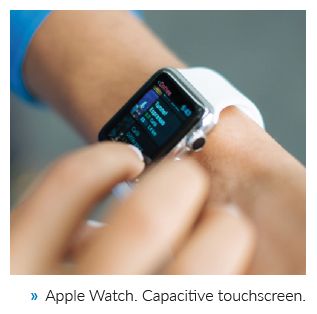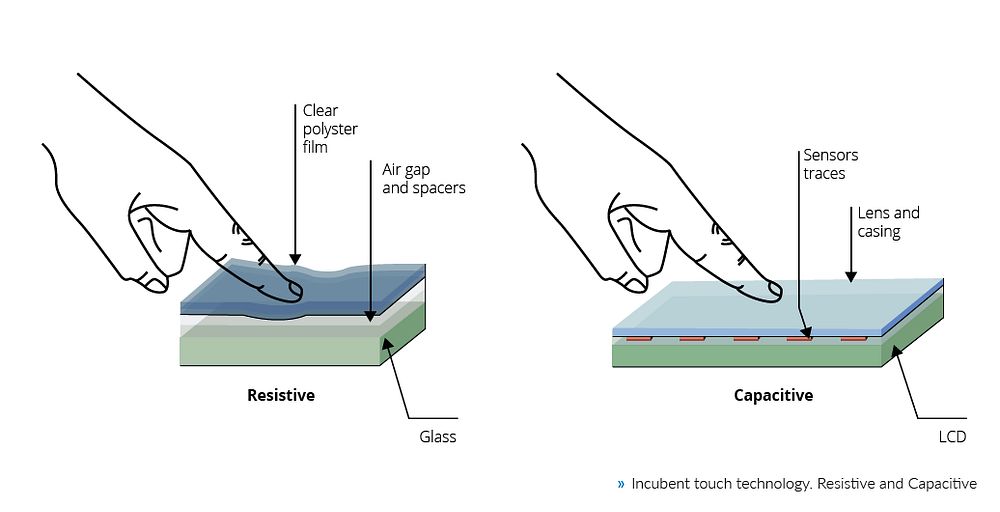Blogginlägg -
Touchscreen technology
Touchscreen technology has been incorporated in several areas of our lives. It has a big impact in daily use of numerous products. Who doesn’t use automatic cashiers at the supermarket, smartphones or even buy transport tickets using interactive terminals? This technology has thousands of applications such as the industrial control panels for medical devices, regular smartphone panels, tablets, computer screens, coffee machines, air conditioners, ATMs etc.
This technologyhas been developed since 1971. Dr. Sam Hurst developed the first touch opaque sensor and the actual real touch screen was developed in 1974.
According to touch industry expert Geoff Walker of Walker Mobile there are 18 distinctly different touch technologies available. The touch screens are based on several technologies: capacitive, analog resistive, surface acoustic wave and infrared. The most used in the market are the two first mentioned: capacitive and resistive touch screens.

The resistive touch screen relies on resistance. The touch screen is based on two layers, the flexible top layer, that is usually made of plastic and the rigid bottom layer made of glass. Both layers are covered with a grid of electrical conductors (thin film of transparent conductor material as indium tin oxide (ITO) or fine metal wires) and spaced by spacers. When you press the screen, both layers make contact and produce a change in the electrical current, then the voltage is measured and the chip inside the screen figures out the touch position calculated by the resistance in the X axis and Y axis.
Resistive screens can only sense one touch at the same time, so for some devices such as mobile phones, pc or tablets this is not a good option.
The capacitive technique relies on the electrical properties of everything that holds an electric charge. The capacitive touch screen has one layer (self-capacitance) or two layers (mutual capacitance). The mutual

capacitance has an external layer, which is made of glass with a grid of conductive thin lines of metal, for example the indium tin oxide. The grid has x lines called driving lines, which give a stable electric current and the y sensing lines, which are used to detect the electrical current. Between these two different lines of layers is the isolating layer used to prevent transmission of charge to different points of the grid. When a human touches the screen with a finger or a capacitive tool like a pen, it changes the amount of charge and sends the information to the controller to figure out the exact point pressed on the screen. Capacitive screens have the advantage of multi-touch, so several touches are detected simultaneously.

Author: Tania Lazaro
Hardware Engineer at Addiva Software
and Embedded Services
Ämnen
- Data, Telekom, IT
Kategorier
- teknik
- forskning
- touch technology
- touch